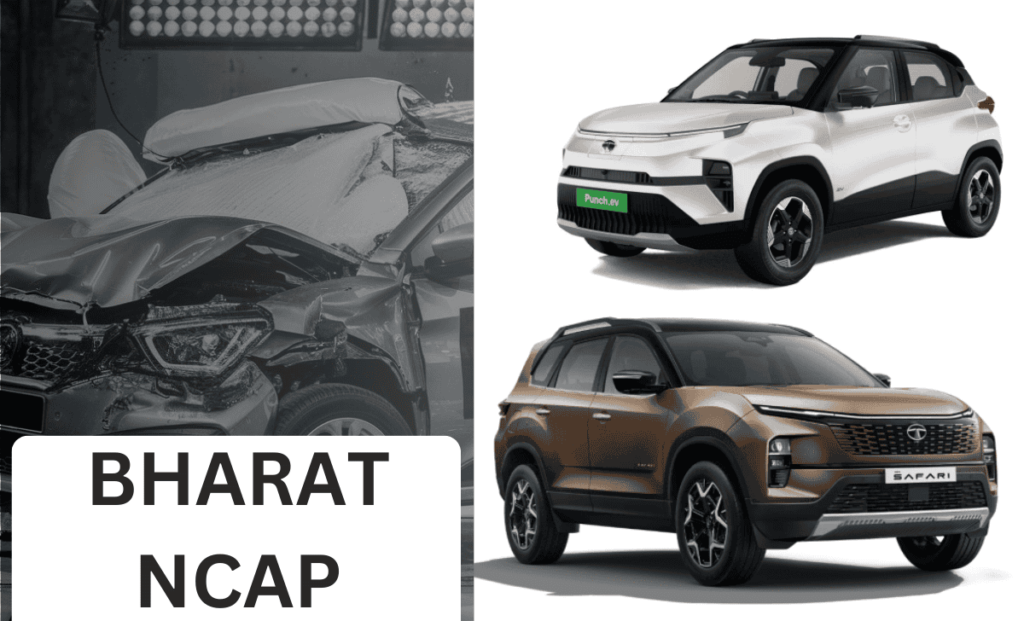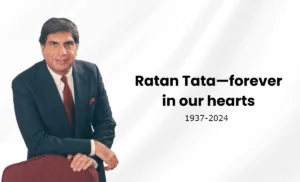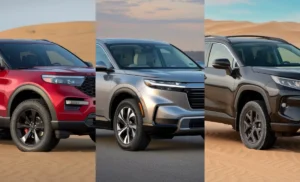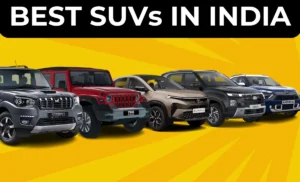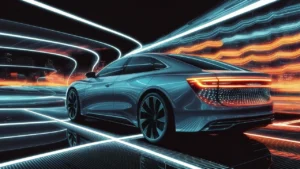Introduction to Bharat NCAP
The Government of India has taken a significant step towards enhancing vehicular safety with the introduction of the Bharat New Car Assessment Programme (Bharat NCAP). This initiative replaces the Global NCAP for crash testing and scoring cars sold within the country. The primary objective of Bharat NCAP is to provide consumers with reliable and transparent safety ratings, thereby enabling them to make more informed decisions when purchasing a vehicle.
Since its inception eight months ago, Bharat NCAP has focused on evaluating the safety standards of vehicles, particularly SUVs, which have seen a surge in popularity in recent years. As of now, the program has conducted crash tests on four vehicles. The results from these tests offer valuable insights into how well these SUVs can protect occupants in the event of an accident.
The introduction of Bharat NCAP represents a proactive effort by the Indian government to align domestic automotive safety standards with global benchmarks. By conducting rigorous crash tests and disseminating the results, Bharat NCAP not only promotes consumer awareness but also encourages manufacturers to prioritize safety features in their vehicle designs. This, in turn, is expected to drive a reduction in road fatalities and injuries, contributing to safer road travel in India.
In this blog post, we will provide a comprehensive overview of the Bharat NCAP program and closely examine the outcomes of the crash tests performed on SUVs. Our analysis will offer a detailed look at how these vehicles fare in terms of safety and what it means for prospective buyers. By understanding the significance of these safety ratings, consumers can make choices that prioritize their well-being and that of their loved ones.
Tata Nexon EV: A 5-Star Performer
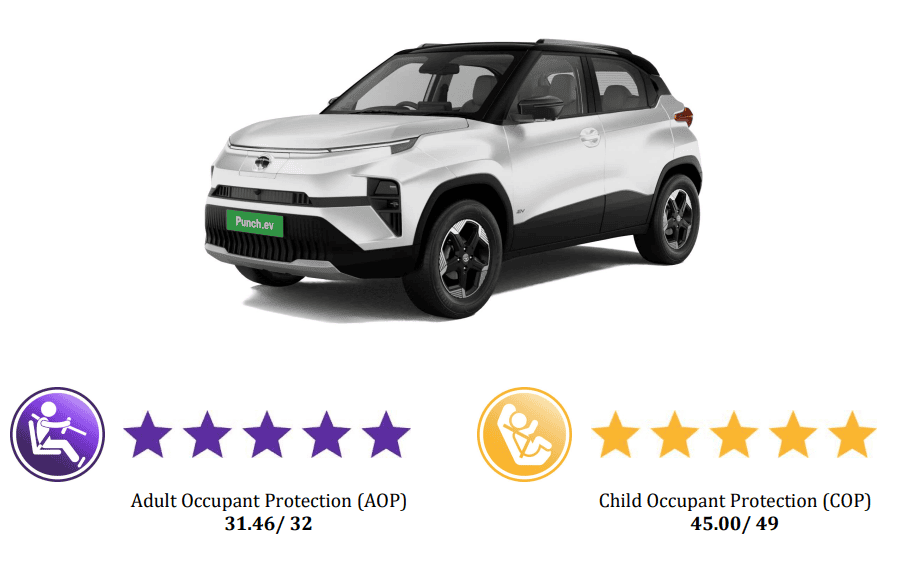
The Tata Nexon EV has emerged as a standout vehicle in the Indian automotive market, particularly in the electric SUV segment. Evaluated rigorously by Bharat NCAP, the Nexon EV has achieved an impressive 5-star rating, reflecting its superior safety standards. For adult occupant protection, it scored a remarkable 29.86 out of 32, and for child occupant protection, it garnered an equally commendable score of 44.95 out of 49. These results underscore the vehicle’s robust safety features and commitment to passenger security.
Positioned in a competitive price range between Rs 14.49 lakh to Rs 19.49 lakh, the Tata Nexon EV offers exceptional value for its safety credentials. The vehicle directly rivals the Mahindra XUV400, another prominent player in the electric SUV market. However, the Nexon EV distinguishes itself not only through its safety features but also with its impressive performance metrics.
The Tata Nexon EV boasts an ARAI-certified range of up to 465 km on a single charge. This extensive range significantly enhances its practicality for daily commuting and long-distance travel, making it a formidable contender in the electric vehicle landscape. The combination of a high safety rating, competitive pricing, and a long driving range positions the Nexon EV as a compelling choice for consumers prioritizing safety and efficiency.
In conclusion, the Tata Nexon EV exemplifies the strides made by Indian automakers in the realm of electric vehicles and vehicular safety. Its 5-star Bharat NCAP rating serves as a testament to Tata Motors’ dedication to producing vehicles that meet stringent safety standards while also addressing the growing demand for sustainable and efficient transportation solutions.
Tata Punch EV: Matching Safety Standards
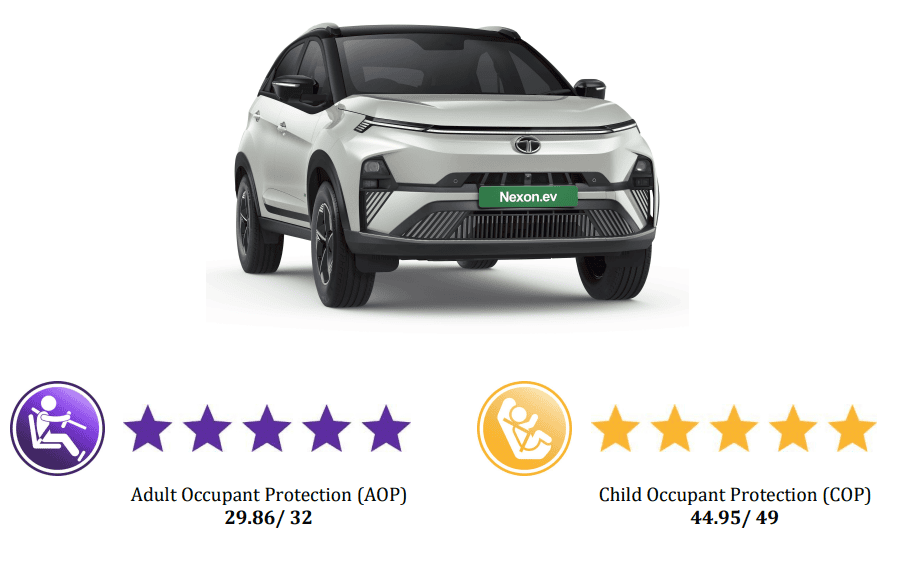
Tested alongside the Nexon EV, the Tata Punch EV has demonstrated remarkable safety standards, securing an impressive 5-star rating for both adult and child occupancy. Specifically, the Punch EV scored 31.46 out of 32 points for adult occupant protection, a testament to the robust safety mechanisms integrated into the vehicle. For child occupant protection, the vehicle garnered 45 out of 49 points, reinforcing its commitment to ensuring the safety of younger passengers.
Priced competitively from Rs 10.99 lakh to Rs 15.49 lakh, the Tata Punch EV offers an attractive proposition for consumers seeking a safe and reliable electric vehicle. This rating aligns the Punch EV with its sibling, the Nexon EV, both of which reflect Tata Motors’ unwavering dedication to safety in their electric vehicle lineup. The achievement underscores the brand’s holistic approach to vehicle design, where passenger safety is paramount.
The 5-star rating awarded to the Tata Punch EV is not just a numerical accolade but a significant indicator of the vehicle’s structural integrity and advanced safety features. These include multiple airbags, reinforced body structures, and sophisticated electronic stability control systems. Such features collectively contribute to the high safety scores and provide peace of mind for drivers and passengers alike.
Tata Motors’ focus on safety extends beyond regulatory compliance; it is a core aspect of their manufacturing philosophy. By investing in advanced safety technologies and rigorous testing procedures, Tata Motors ensures that their vehicles, including the Punch EV, meet and exceed global safety standards. This commitment is evident in the consistent high safety ratings that their vehicles receive, making them a preferred choice for safety-conscious consumers.
In conclusion, the Tata Punch EV’s stellar safety ratings and competitive pricing position it as a formidable player in the Indian electric vehicle market. Its alignment with the Nexon EV in terms of safety underscores Tata Motors’ dedication to producing vehicles that prioritize the well-being of their occupants, setting a benchmark for safety in the industry.
Tata Harrier/Safari: Dual Excellence
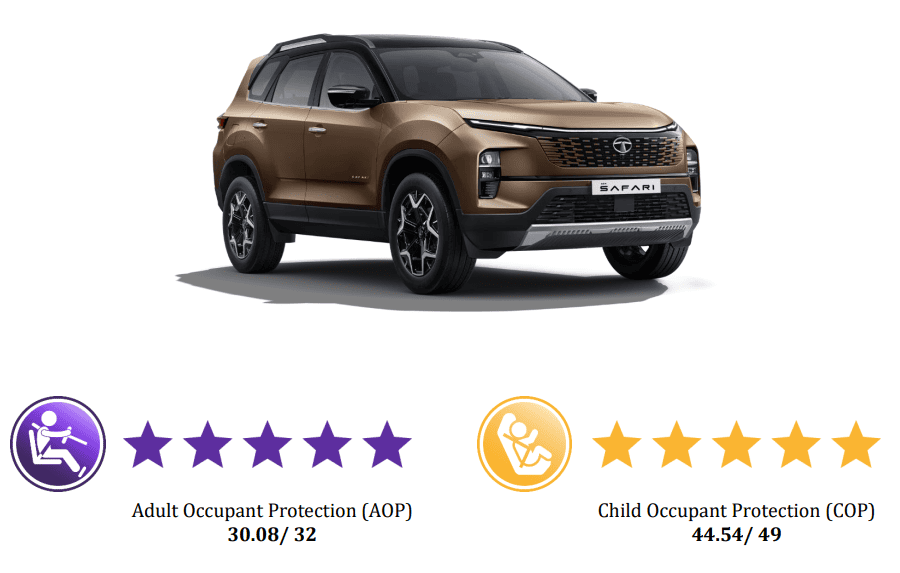
The Tata Harrier/Safari, two prominent models in Tata Motors’ SUV lineup, underwent rigorous crash testing in December of last year. Both vehicles excelled in the Bharat New Car Assessment Program (NCAP), securing an impressive 5-star safety rating for both adult and child occupancy. This achievement underscores the robust safety features integrated into these SUVs, making them stand out in the competitive Indian automotive market.
In terms of Adult Occupant Protection (AOP), both the Harrier and Safari achieved a remarkable score of 30.08 out of a possible 32 points. This high score reflects the extensive safety measures and structural integrity designed to protect adult passengers in the event of a collision. For Child Occupant Protection (COP), both models scored 44.54 out of 49, further highlighting their commitment to safeguarding younger passengers.
The Tata Harrier is positioned in the market with a price range starting from Rs 15.49 lakh and going up to Rs 26.44 lakh. The Safari, on the other hand, is priced between Rs 16.19 lakh and Rs 27.34 lakh. These pricing brackets make both models accessible to a broad spectrum of consumers, offering them state-of-the-art safety features without compromising on affordability.
These outstanding safety ratings are a testament to Tata Motors’ dedication to producing vehicles that prioritize passenger safety. The integration of advanced safety technologies and rigorous testing protocols ensures that both the Harrier and Safari provide a secure driving experience. The dual excellence of these models serves as a benchmark for other manufacturers aiming to enhance the safety standards of their vehicles.
In conclusion, the Tata Harrier and Safari exemplify Tata Motors’ commitment to safety, offering consumers reliable and secure transportation options. Their high Bharat NCAP ratings validate the effectiveness of their safety features, making them exemplary choices in the SUV segment in India.

